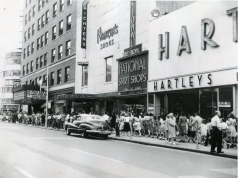Opa-locka’s city officials are negotiating with contractors to begin work on the restoration of the city hall building, a big step for the long-delayed project.
The building has been unusable for over seven years now due to a mold infestation, and has been shuttered ever since.
The restoration of the building is funded by both the Community Redevelopment Agency as well as the city’s general funds. The project is estimated to cost a total of about $1.9 million.
The multi-step project requires funding for each step, the first of which is to rework the structural integrity of the building.
“We just got funded by the CRA and we are now turning our attention to the contractor to see when we can begin,” said Public Works Director Airia Austin.
According to Austin, after the structural integrity of the building has been reworked the next step will be to restore the tower itself.
Vice Mayor Chris Davis said that they are currently working to secure funding for the next step of the project.
The project is estimated to take eight months to complete. A start date is yet to be set, said city officials.
Due to the unusable state of the city hall, commission meetings and other government business have been taking place in the nearby Sherbondy Village Community Center, a short distance away.
The restoration of historic city hall is important to the city of Opa-locka, because it is the face of the community, say officials.
“The historic city hall is an icon within the city of Opa-locka, its basically our logo, our picture, and it represents the history of this city,” said Mayor Matthew Pigatt.
According to Pigatt, Opa-locka is the capital of Moorish architecture in the Western Hemisphere and the city has more Moorish-style buildings than anywhere else in this part of the world.
Opa-locka’s City Hall was originally built in the 1920s by developer Glenn Curtiss who took heavy inspiration from Middle Eastern architecture.
The Middle Eastern theme is reflected in the name of its roads as well, bearing names such as Ali Baba Avenue, Aladdin Street, and Bagdad Avenue.
































